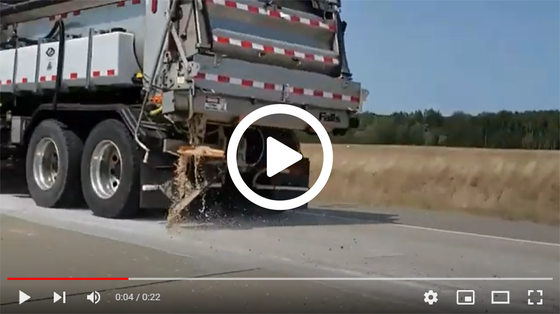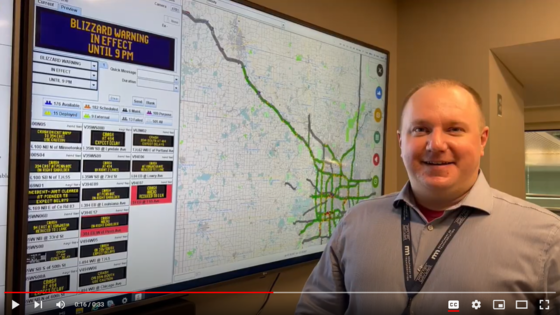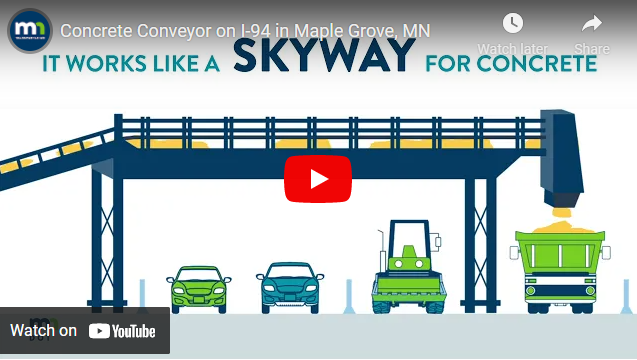MnDOT Innovation Focus


Over the past year, dozens of staff from across the agency have been meeting to develop a formal strategy and program to accelerate innovation at MnDOT.
Part of our work is learning from organizations with strong innovation cultures.
MnDOT recently held a Peer Exchange with state transportation departments who have implemented innovation programs, including California, Utah, and Wisconsin.
Our peer DOTs shared the following tips for advancing innovation:
- Add “innovation” as a standing agenda topic in meetings.
- Before taking on a new initiative, ask: “What can we stop doing?”
- Regularly network with peers from other states, so you’re not blinded by your own processes.
- Shift your mindset from “do more with less” to “do more with less effort.”
- Use a value vs. effort curve to prioritize what new initiatives to take on.
Stay tuned — we plan to share our strategy for building stronger innovation culture and practices at MnDOT early next year.
|
 By Shannon McIntyre, Office of Maintenance
MnDOT’s winter maintenance crews constantly train and look for new solutions to apply the right deicing materials, in the right amount, time and place, to provide safe driving conditions with the least amount of environmental impact.
One way to reduce salt usage is to ensure that as much salt as possible stays within the target area of the traveling lane.
Maintenance staff from across the state conducted salt scatter and bounce testing at Fort Ripley this summer to learn how current salt application systems, as well as various snow and ice chemicals, affect salt scatter across the roadway. The last salt scatter and bounce testing was completed roughly 10 years ago; since then, technology, equipment, and best practices have changed, creating a need to retest with the current methods.
Test Logistics
The testing was performed along a controlled roadway surface identical to a multi-lane divided highway.
Standard application spinners and various chute designs were used, along with a variety of snow and ice materials and combinations, including:
- Dry rock salt
- Prewet rock salt (gravity fed)
- Slurry systems with liquid rates of 20, 30 and 40 gallons
Test Results
Results clearly illustrated how increasing liquids reduce salt bounce and scatter across the roadway. There was also a significant reduction in the amount of material lost off the roadway in comparison to the dry salt application method.
The collected data will allow further examination of how crews can utilize lower application rates of salt slurry in comparison to dry salt so a larger amount of the salt remains in the “target area” and isn’t lost off the roadway.

By Thomas Johnson-Kaiser, CAV-X Office
On Sept. 30, the Med City Mover driverless shuttles officially launched to the public in Rochester! The project includes two low-speed, six-passenger, electric, highly automated, self-driving shuttles. The Med City Mover is Minnesota’s first autonomous shuttle demonstration project in a downtown environment with multi-modal live traffic. The shuttles are free to ride and operate daily (see hours), except holidays, through August 2022. The free and open to the public shuttles planned hours of operation are Monday-Friday 9 a.m.-3:30 p.m. and 9 a.m.-5 p.m. Saturdays and Sundays, except holidays, through August 2022. The vehicles travel up to 15-miles per hour, making two stops along the route. One stop is outside the Mayo Clinic’s Gonda Building and the other is outside the People’s Food Co-op. Riders are asked to fill out a short survey before and after their ride. The data and user-experience gathered during the year-long project will be used to help MnDOT and other transportation agencies prepare for safe and expanded use of the technology.
“Partnership projects like this are essential to better understand the benefits, challenges and risks of automated technology,” said Commissioner Margaret Anderson Kelliher said. “Feedback from riders about their experiences on these vehicles will help us continue to improve our transportation system and create a future that prioritizes travel options, reliability and sustainability.”
During the pilot project, MnDOT and its partners hope to engage and educate the public by providing real world automated vehicle experience and identify infrastructure gaps and solutions to safely operate automated vehicles on public roadways. It also hopes to advance the operation of automated vehicle technology in winter weather conditions and provide an enhanced transportation experience and increase mobility in a high-demand downtown urban environment. MnDOT is grateful for their many project partners, including the city of Rochester, Destination Medical Center, Mayo Clinic, Minnesota Department of Public Safety, First Transit and EasyMile. For more information visit medcitymover.com.
|
 MnDOT was named a finalist for the Minnesota Technology Association 2021 Tekne Awards in the Digital Transformation category for its automation of weather alerts on digital highway message signs. For the past two decades, the Tekne Awards have recognized organizations that are leading-edge innovators in science and technology throughout Minnesota.
 A new concrete conveyor system made its Minnesota debut on I-94 near Brockton Lane in Maple Grove in 2021. This innovative piece of equipment will make travel safer and smoother for motorists and road construction crews, and help make the project more efficient. You can expect:
-
Less interruption. The trucks hauling concrete can remain in the construction zone, stay off highways, and will not have to mix with traffic. This allows crews to widen the highway without needing to close traffic lanes to facilitate the entering and exiting of 350 concrete trucks each day.
-
Safer roads. The concrete conveyor system greatly improves the safety for construction crews because they can avoid merging into highway traffic. It also increases safety for motorists because it lessens the amount of lane restrictions and reduces traffic impacts.
-
Greener. The conveyor replaces thousands of truck trips, reducing emissions from trucks hauling concrete through highway traffic.
-
Shorter construction time. Ultimately, this saves time so MnDOT can complete the project faster.
How does the system work? Concrete is mixed up, poured onto the conveyor system, and then transported on an 85-foot long and 16-foot wide conveyor belt that travels 18 feet up and over the roadway. The concrete then pours off of the belt on the other side of the road, filling up one truck at a time. The conveyor will replace approximately 6,000 truck trips over the course of the summer.
The Traffic Safety Innovation Award recognizes organizations for new or creative traffic safety solutions that help save lives on Minnesota roads. The award is given for work on specific actions, initiatives, programs, best practices, marketing campaigns, partnerships, or products.
The Minnesota Emergency Nurses Association, Minnesota State Council, is recognized for its efforts to introduce the Driver Orientation Screen for Cognitive Impairment screening tool to Minnesota law enforcement officers and agencies. The DOSCI tool, along with education about older drivers, helps officers determine whether a driver is cognitively impaired or too disoriented to be allowed to continue driving. The tool has made its way into at least 50 law enforcement agencies, filling a training gap in older driver safety awareness education.
The Minnesota ENA consists of more than 740 members across the state and promotes safe practice, safe care, community safety, advocacy and injury prevention. The Minnesota ENA State Council is eligible to apply for state grants and, by collaborating with the state of Minnesota and TZD, is able to carry out a variety of patient safety initiatives related to injury prevention.
This newsletter is produced by MnDOT's Office of Research & Innovation. Have a story idea? Let us know! If you have a question or need content in an alternative format, please contact our office at research.dot@state.mn.us or 651-366-3738.
|